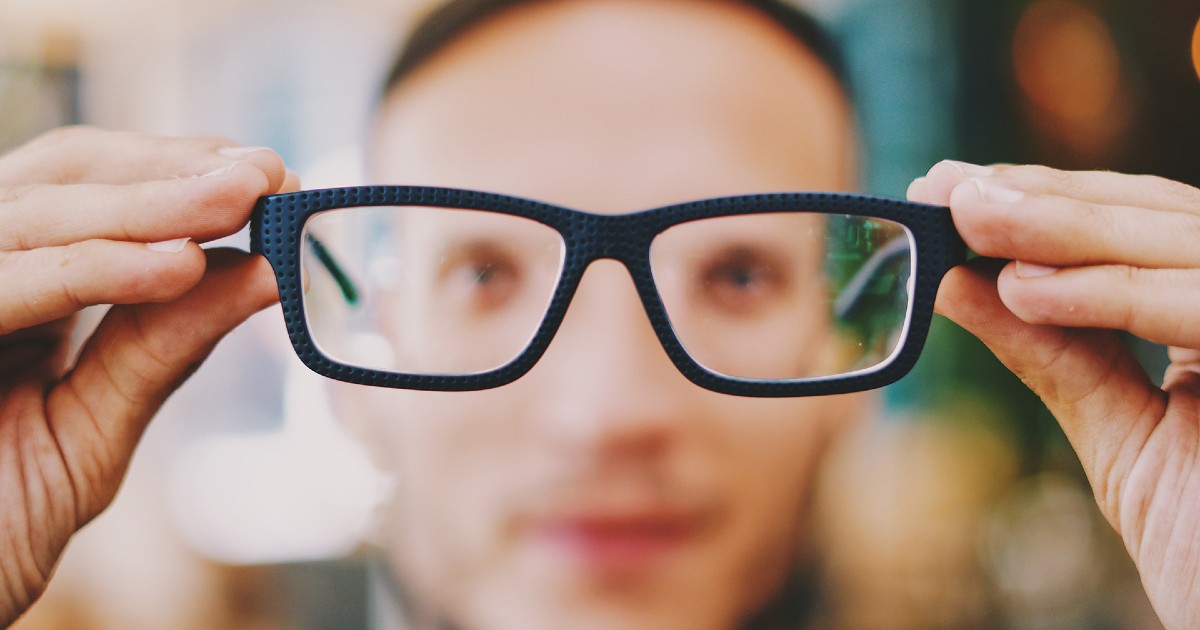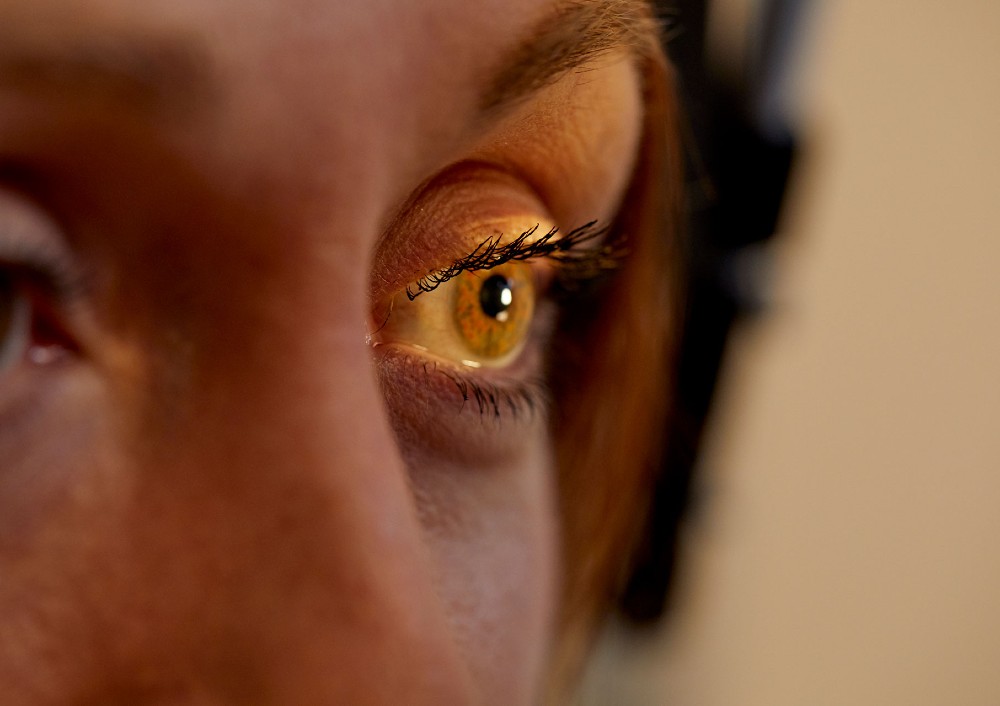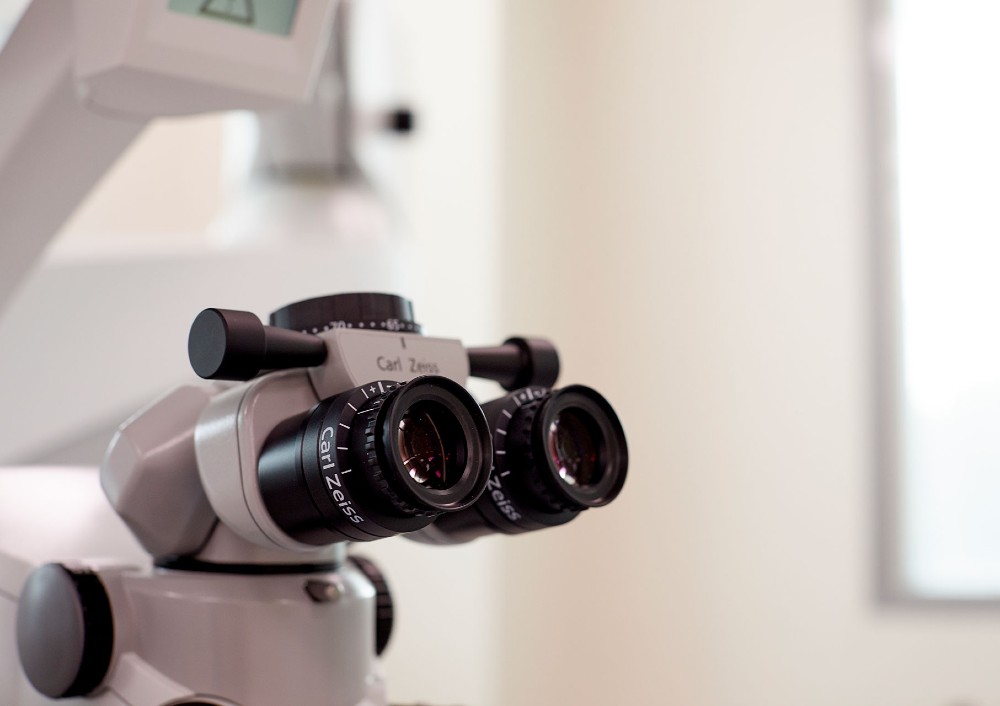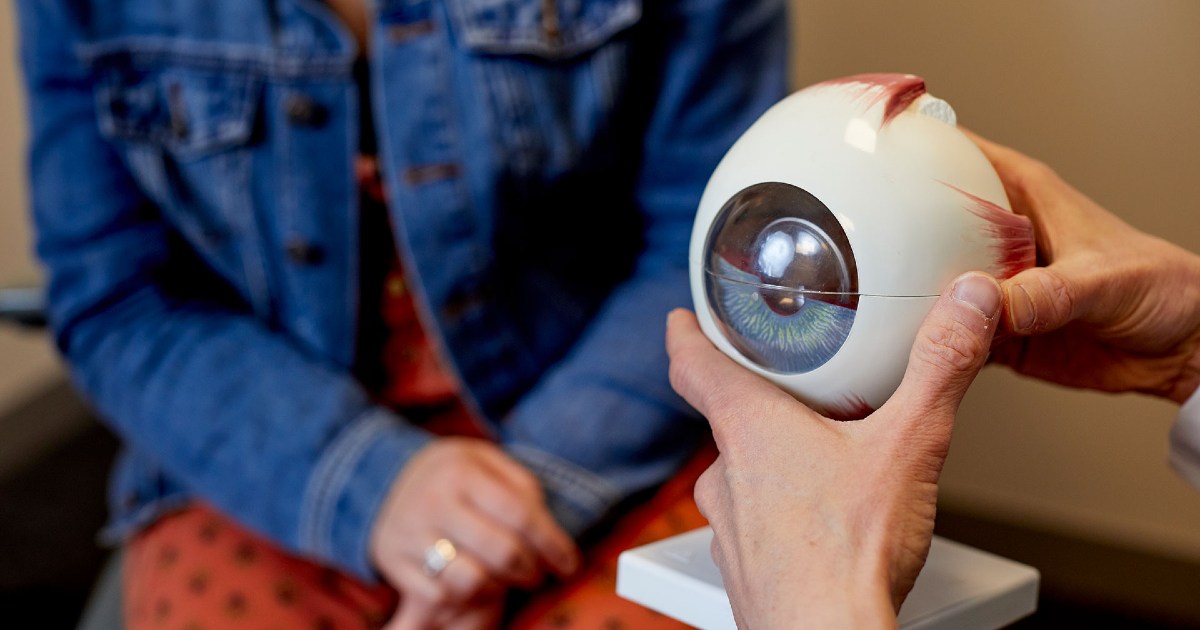Keratoconus
The normal corneal is a dome shaped, slightly more curved and thinner in its centre. In the periphery, the curve is flatter and thickness greater. This gentle flattening of the cornea moving from the centre to periphery is typically symmetrical. That is, the amount of curve is the same for a given distance from the cornea centre, whether referring to the upper, lower, inner or outer cornea. Such a smooth side profile allows for clear vision.
Keratoconus is a condition where the corneal shape is abnormal. In keratoconus, the steepest part of the cornea is steeper (or more curved) than a normal-shaped cornea. The steepest part is also lower rather than in the centre of the cornea. Incoming light through the central cornea passes through more “irregular surfaces”. This is irregular astigmatism.
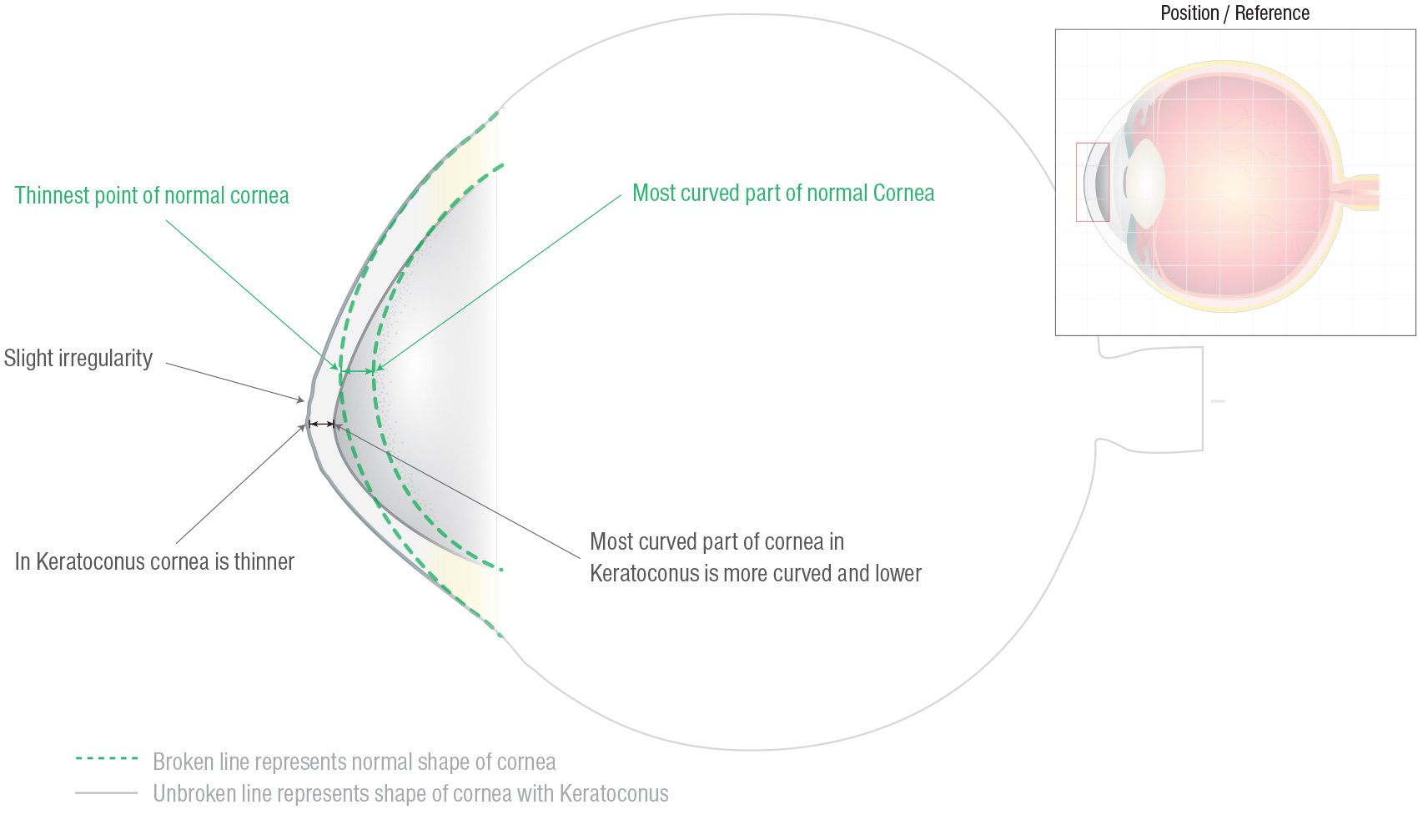
Corneal topography is a technique that allows the curvature of the cornea to be measured.
Glasses are able to correct short-sightedness, long-sightedness and basic astigmatism. Central irregularities occurring in keratoconus are not corrected by glasses, however, and require a hard contact lens to be worn for correction. A hard contact lens sits on the cornea separated from the latter by a thin layer of tears. The front surface of the hard contact lens then becomes the new first, refracting and focusing element of the eye, smooth rather than irregular in shape. This explains why patients with significant astigmatism will often experience superior vision with a hard contact lens when compared with glasses.
In addition to abnormal curvature, the cornea is more likely to have areas of opacity which further diminish vision.
Fuchs Endothelial Dystrophy
The endothelium is a single layer of cells that lie on the very back of the cornea. Their role is to pump fluid into the front chamber of the eye, thereby maintaining corneal clarity. For this function they are dependent on oxygen.
Fuchs dystrophy is a condition of the endothelium. Patients with Fuchs endothelial dystrophy have a reduced endothelial cell number as a result of their dystrophy.
In mild forms it may result in blurred vision for a few hours on waking. On rare occasions the cornea is unable to maintain its clear transparent state, and a corneal transplant is required.

